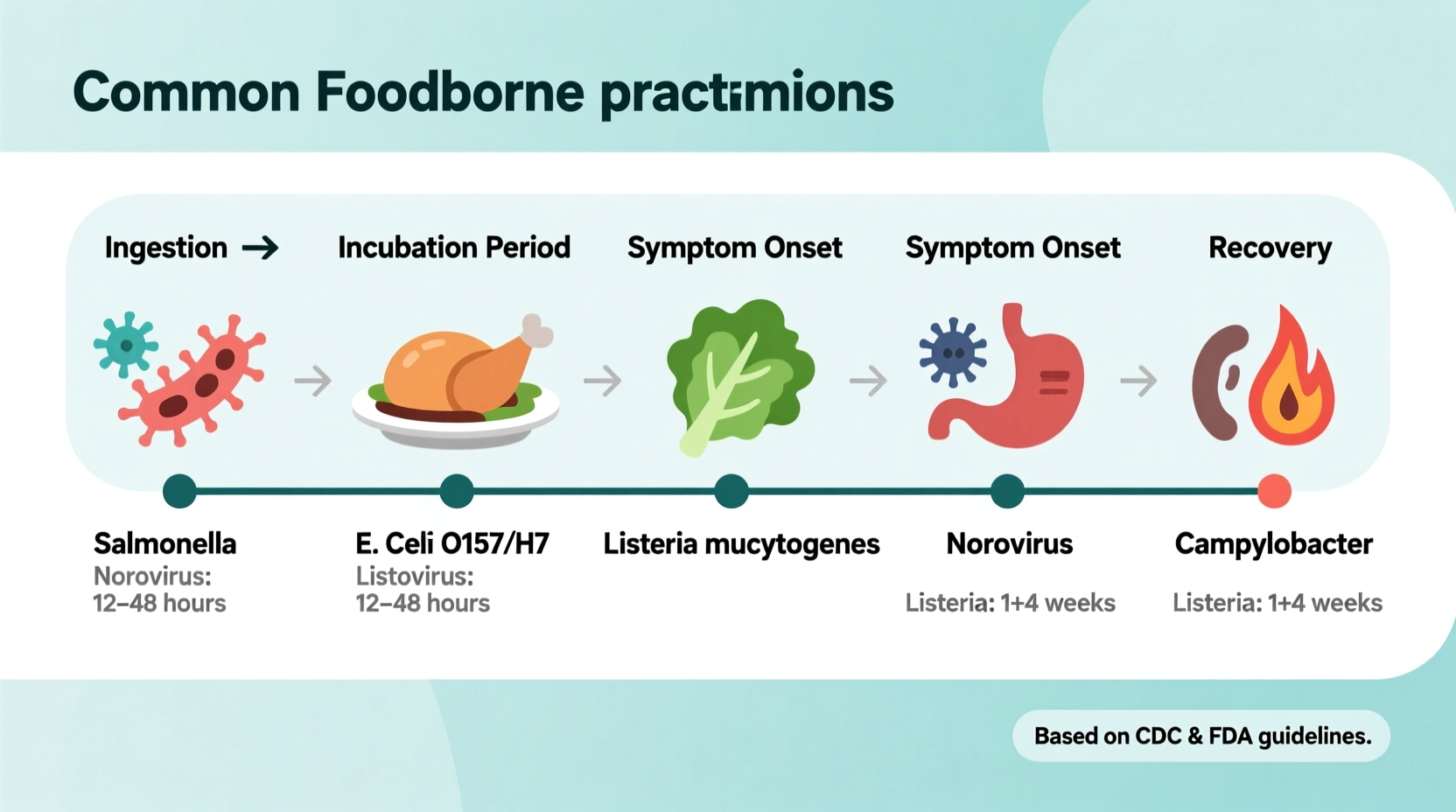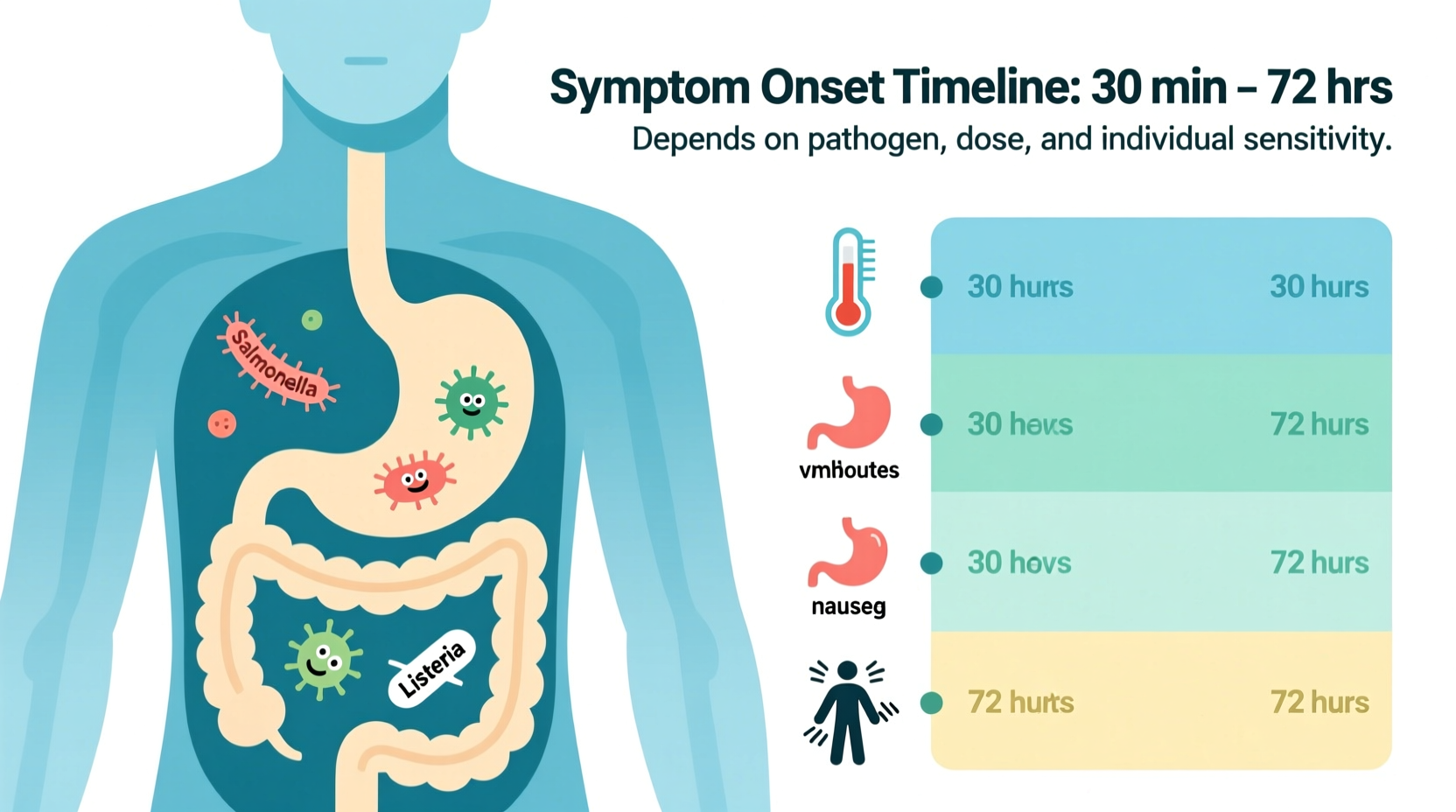Food poisoning symptoms can begin as quickly as 30 minutes after consuming contaminated food, though most cases develop within 6 to 72 hours depending on the specific pathogen. Bacterial toxins like Staphylococcus aureus act fastest (30 min-8 hrs), while infections like E. coli typically take 1-10 days to manifest. Knowing these timelines helps identify the source and determine when to seek medical care.
When your stomach suddenly rebels after a meal, your first urgent question is likely: How fast can food poison hit? Understanding the precise onset windows for different foodborne illnesses isn't just academic—it's critical for identifying the culprit food, determining appropriate treatment, and knowing when symptoms warrant emergency care. This guide delivers medically verified timelines backed by CDC data, helping you respond effectively when food safety fails.
Why Food Poisoning Onset Times Vary Significantly
The speed at which food poisoning strikes depends primarily on the contaminating agent. Not all "food poisoning" is the same—different bacteria, viruses, and toxins have distinct biological mechanisms that determine how quickly they trigger symptoms. The critical distinction lies between foodborne intoxication (toxins already present in food) and foodborne infection (pathogens that must multiply in your body).
| Type | Mechanism | Typical Onset Time | Common Sources |
|---|---|---|---|
| Intoxication | Preforated toxins consumed | 30 min - 8 hours | Improperly stored cooked foods, dairy |
| Infection | Pathogens multiply in digestive tract | 6 hours - 10 days | Undercooked meats, contaminated produce |
Pathogen-Specific Onset Timelines: What You Need to Know
Medical professionals categorize foodborne illnesses by their incubation periods—the time between consuming contaminated food and symptom onset. Recognizing these patterns helps medical providers diagnose the specific pathogen involved.
Ultra-Fast Acting Toxins (30 Minutes to 8 Hours)
Staphylococcus aureus produces heat-stable toxins in foods left at room temperature. As the CDC confirms, symptoms often appear within 30 minutes to 8 hours after ingestion, featuring sudden nausea, violent vomiting, and abdominal cramps. These toxins aren't destroyed by cooking, making proper food temperature control critical.
Bacillus cereus (vomiting type) commonly contaminates rice and pasta dishes left at improper temperatures. The emetic toxin causes symptoms within 30 minutes to 6 hours, primarily vomiting with minimal diarrhea. This rapid onset frequently gets mistaken for viral gastroenteritis.

Moderate Onset Pathogens (6-72 Hours)
Norovirus, the most common cause of foodborne illness in the US according to CDC surveillance data, typically produces symptoms 12-48 hours after exposure. This highly contagious virus causes projectile vomiting, watery diarrhea, and stomach cramps that last 1-3 days.
Salmonella infections usually manifest 6-48 hours after consuming contaminated eggs, poultry, or produce. Symptoms include diarrhea (sometimes bloody), fever, and abdominal cramps lasting 4-7 days. The FDA notes that improper egg handling remains a primary transmission route.
Delayed Onset Pathogens (3+ Days)
E. coli O157:H7 infections typically develop 3-4 days after exposure, though the CDC reports ranges from 1-10 days. This pathogen causes severe abdominal cramps, bloody diarrhea, and potential kidney complications. Undercooked ground beef and contaminated leafy greens are common sources.
Listeria has the most deceptive timeline, with symptoms appearing 1-4 weeks after consumption. The CDC emphasizes this delayed onset makes Listeria particularly dangerous for pregnant women, as they may not connect symptoms to contaminated foods like deli meats or soft cheeses consumed weeks earlier.
Factors That Accelerate or Delay Symptoms
Your personal risk profile significantly influences how quickly food poisoning hits. Understanding these variables helps assess your specific situation:
- Food matrix effects: Fatty foods can delay gastric emptying, potentially slowing toxin delivery to the intestines
- Individual stomach acidity: People with low stomach acid (from medications like PPIs) may experience faster symptom onset
- Pathogen load: Higher contamination levels typically cause quicker, more severe symptoms
- Age and immune status: Elderly, young children, and immunocompromised individuals often show symptoms sooner
When to Seek Immediate Medical Attention
While most food poisoning cases resolve without treatment, certain symptoms require urgent care regardless of onset time:
- Symptoms beginning within 2 hours of eating (possible botulism or chemical contamination)
- Blood in vomit or stool
- Signs of dehydration (reduced urination, dizziness when standing)
- Neurological symptoms like blurred vision or muscle weakness
- Symptoms lasting beyond 72 hours without improvement
The FDA specifically warns that botulism symptoms—which can begin 12-36 hours after consuming contaminated home-canned foods—require immediate emergency treatment due to potential respiratory failure.
Practical Prevention Strategies Based on Onset Timelines
Understanding these timelines directly informs effective prevention:
- For fast-acting toxins: Never leave cooked foods at room temperature more than 2 hours (1 hour if above 90°F)
- For bacterial infections: Always cook meats to proper internal temperatures (165°F for poultry)
- For delayed pathogens: Maintain vigilance about food sources even when symptoms appear days later
- Universal practice: Wash hands thoroughly before handling food and after bathroom visits
Implementing these evidence-based practices significantly reduces your risk across all foodborne illness categories.
What to Do When Symptoms Strike
Your immediate actions should align with the suspected pathogen based on onset time:
- Within 2 hours: Contact poison control (1-800-222-1222) as some toxins may be treatable with activated charcoal
- Within 6-12 hours: Focus on hydration with oral rehydration solutions—avoid anti-diarrheal medications which can prolong infection
- After 24 hours: Document symptoms and potential food sources to help medical providers identify the pathogen
Preserve any remaining suspect food for potential testing, as the CDC notes this can help identify outbreaks affecting others.











 浙公网安备
33010002000092号
浙公网安备
33010002000092号 浙B2-20120091-4
浙B2-20120091-4